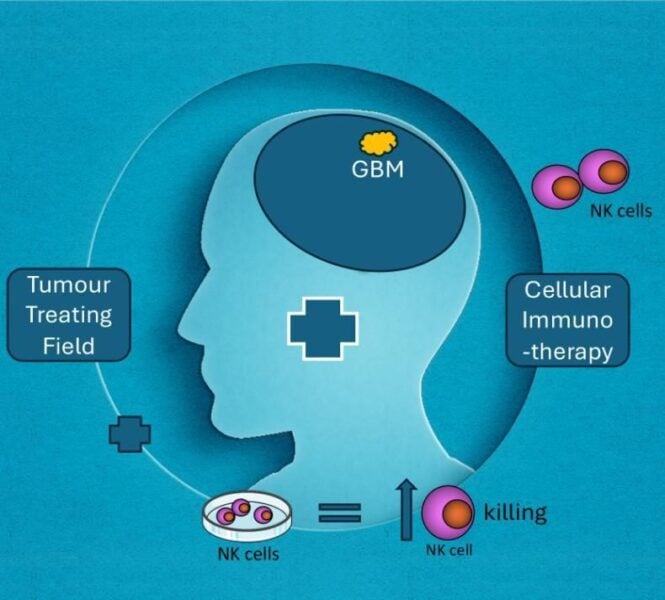Researchers at Trinity College Dublin have uncovered a promising new approach to boost the cancer-fighting abilities of our body’s natural killer cells. The study, published in Cell Reports Physical Science, reveals that exposure to electrical currents may enhance the killing power of these immune cells, opening up new possibilities for treating aggressive brain cancers like glioblastoma.
Harnessing the Power of Natural Killer Cells
Natural Killer (NK) cells are a crucial part of our immune system, capable of identifying and destroying cancer cells. However, in some aggressive cancers, these cells often fall short. The new research suggests that Tumor Treating Fields (TTF) – a technique that uses electric currents to disrupt cancer cell division – might give NK cells an extra edge.
Professor Clair Gardiner, lead researcher from Trinity’s School of Biochemistry and Immunology, explained the significance: “Immunotherapies have improved outcomes for a large range of cancer types and offer significant potential for hard-to-treat cancers; however, it is likely that a combination of treatment approaches will ultimately be required for maximum impact on patient outcomes.”
The study focused on glioblastoma, an aggressive brain cancer with a poor prognosis. Current treatments, including surgery, chemotherapy, and radiation, often fail to prevent the cancer’s return. This research offers a glimmer of hope for a new combination therapy.
Electrical Currents: A Surprising Ally in Cancer Treatment
The researchers exposed NK cells to Tumor Treating Fields in laboratory conditions, mimicking the effect of the electric current-generating caps worn by some brain cancer patients. Surprisingly, this exposure seemed to supercharge the NK cells’ cancer-killing abilities.
Key findings from the study include:
1. TTF exposure did not negatively impact NK cell survival or their ability to produce crucial immune-signaling molecules called cytokines.
2. More importantly, the electrical currents increased NK cell degranulation – a process that indicates enhanced killing ability.
“The findings here are very promising as our work shows that they had minimal negative impact on the NK cells and seemed to make them even more effective as killers,” Professor Gardiner noted.
Why it matters: This research could pave the way for a new dual-modality treatment for glioblastoma patients, combining the tumor-disrupting effects of TTF with the enhanced cancer-killing power of NK cells. For patients facing limited treatment options, this approach offers new hope for more effective therapies.
The study builds on growing interest in the field of bioelectricity and its potential applications in cancer treatment. While TTF therapy is already used for some brain cancers, this research suggests it could work synergistically with immunotherapy approaches.
However, the researchers caution that more work is needed to fully understand the potential of this combination therapy. Professor Gardiner emphasized, “More work is needed, but the data suggest that treatment using a combination of TTF and NK cells could be beneficial, and offer future potential for a new dual-modality treatment for patients with glioblastoma.”
The next steps will likely involve more in-depth studies to confirm these findings and explore how this approach might be translated into clinical treatments. If successful, this research could lead to clinical trials combining TTF therapy with NK cell-based immunotherapies for glioblastoma patients.
As the field of cancer immunotherapy continues to evolve, this study highlights the importance of exploring unconventional approaches and combining different treatment modalities. By leveraging the power of both electrical currents and the body’s own immune defenses, researchers are opening up new frontiers in the fight against aggressive cancers.
If our reporting has informed or inspired you, please consider making a donation. Every contribution, no matter the size, empowers us to continue delivering accurate, engaging, and trustworthy science and medical news. Independent journalism requires time, effort, and resources—your support ensures we can keep uncovering the stories that matter most to you.
Join us in making knowledge accessible and impactful. Thank you for standing with us!

